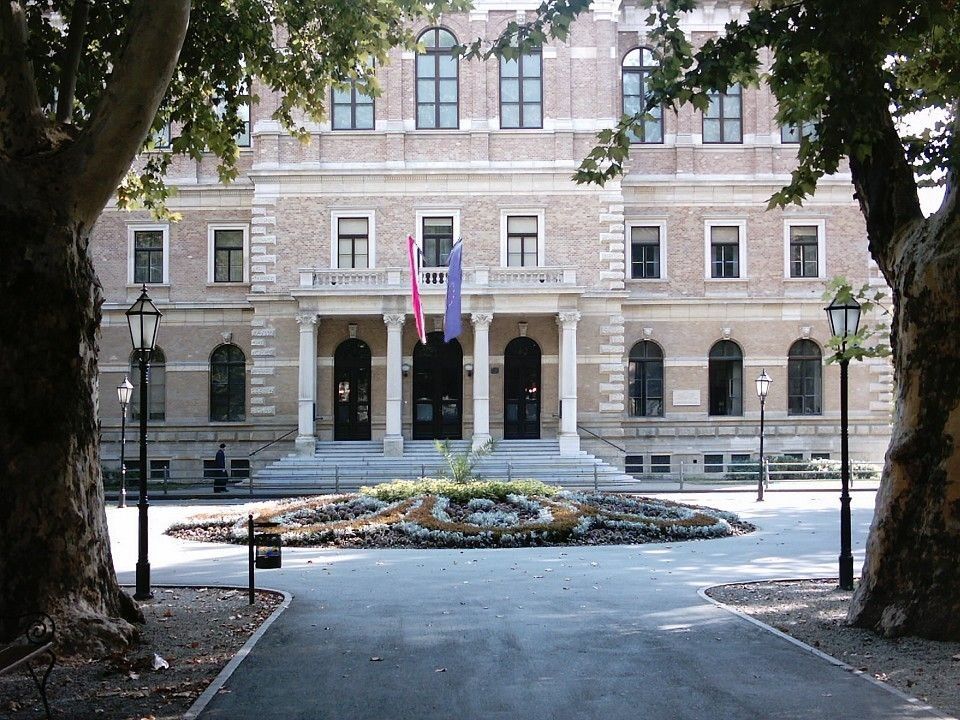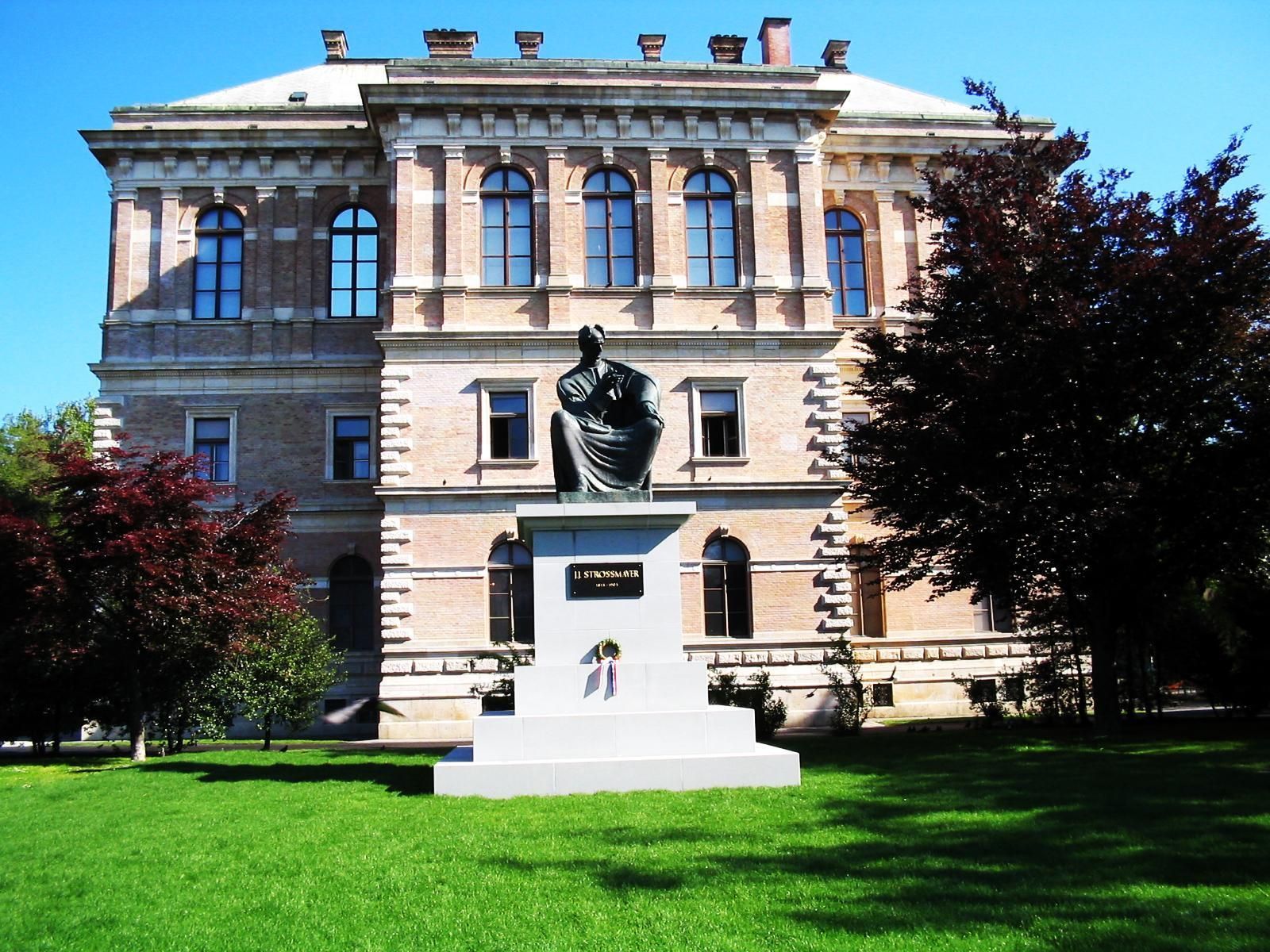In the very beginning, after the foundation in 1861, the Academy did not have an adequate permanent seat; it was first located at the building belonging to the present-day Natural History Museum, and subsequently at the National Hall in Opatička Street. Gradually, after having established the Library and the Archives as well as donated the works of art in 1868, Strossmayer started developing the idea of the need to build an appropriate seat for both the Academy and the Art Gallery. Hence, in 1875, the bishop donated to the (then) Yugoslav Academy of Sciences and Arts the amount of 40,000 florin for the building of the Academy Palace with premises for the Strossmayer Gallery*. It was only that year that Strossmayer had entrusted the drafting of the project with the famous Viennese architect Friedrich von Schmidt (Frickenhofen, 1825 – Vienna, 1891). The original location envisaged for the erection of the palace had been the plateau opposite to the secondary modern school at Grič**; however, this proposal was soon abandoned due to the resentment expressed by the inhabitants. In 1876, the City Committee for the Academy Location decided upon building the Academy at the south side of the Zrinski Square, which was one of the options proposed. Bishop Strossmayer approved of this decision.
Considering the change of location, Schmidt had drafted a new project for the Academy Palace in 1877; his pupil and assistant in the project was Hermann Bollé (Köln, 1825 – Zagreb, 1926). According to this new project, the building was designed in the neo-Renaissance style and planned considerably larger due to the need to accommodate the Archaeological Museum collection. In the same year, the building itself had commenced; the work was managed and supervised by Hermann Bollé. The Palace was completed in 1880, and in the same year on 22nd October, the initial Department Session was held.* In the same 1880, Zagreb had been struck by a grave earthquake that damaged the building considerably, and consequently postponed its take-over and official opening. On 9th November 1884, on the fourth anniversary of the earthquake, the Palace was solemnly presented to the Management of the Academy, and the Strossmayer Gallery was opened to the public.


* Vinko Zlamalik, Sto godina Strossmayerove galerije (One Hundred Years of the Strossmayer Gallery), Exhibition Catalogue, Muzejski prostor (Zagreb, 1984).
** Snješka Knežević, Zagrebačka zelena potkova (The Zagreb Green Horseshoe), Školska knjiga (Zagreb, 1996).
Stay up to date with our events and receive more information about us and our activities.
Necessary cookies are absolutely essential for the website to function properly. These cookies ensure basic functionalities and security features of the website, anonymously.
| Cookie | Duration | Description |
|---|---|---|
| cookielawinfo-checbox-analytics | 11 months | This cookie is set by GDPR Cookie Consent plugin. The cookie is used to store the user consent for the cookies in the category "Analytics". |
| cookielawinfo-checbox-functional | 11 months | The cookie is set by GDPR cookie consent to record the user consent for the cookies in the category "Functional". |
| cookielawinfo-checbox-others | 11 months | This cookie is set by GDPR Cookie Consent plugin. The cookie is used to store the user consent for the cookies in the category "Other. |
| cookielawinfo-checkbox-necessary | 11 months | This cookie is set by GDPR Cookie Consent plugin. The cookies is used to store the user consent for the cookies in the category "Necessary". |
| cookielawinfo-checkbox-performance | 11 months | This cookie is set by GDPR Cookie Consent plugin. The cookie is used to store the user consent for the cookies in the category "Performance". |
| viewed_cookie_policy | 11 months | The cookie is set by the GDPR Cookie Consent plugin and is used to store whether or not user has consented to the use of cookies. It does not store any personal data. |
Functional cookies help to perform certain functionalities like sharing the content of the website on social media platforms, collect feedbacks, and other third-party features.
Performance cookies are used to understand and analyze the key performance indexes of the website which helps in delivering a better user experience for the visitors.
Analytical cookies are used to understand how visitors interact with the website. These cookies help provide information on metrics the number of visitors, bounce rate, traffic source, etc.
Advertisement cookies are used to provide visitors with relevant ads and marketing campaigns. These cookies track visitors across websites and collect information to provide customized ads.
Other uncategorized cookies are those that are being analyzed and have not been classified into a category as yet.